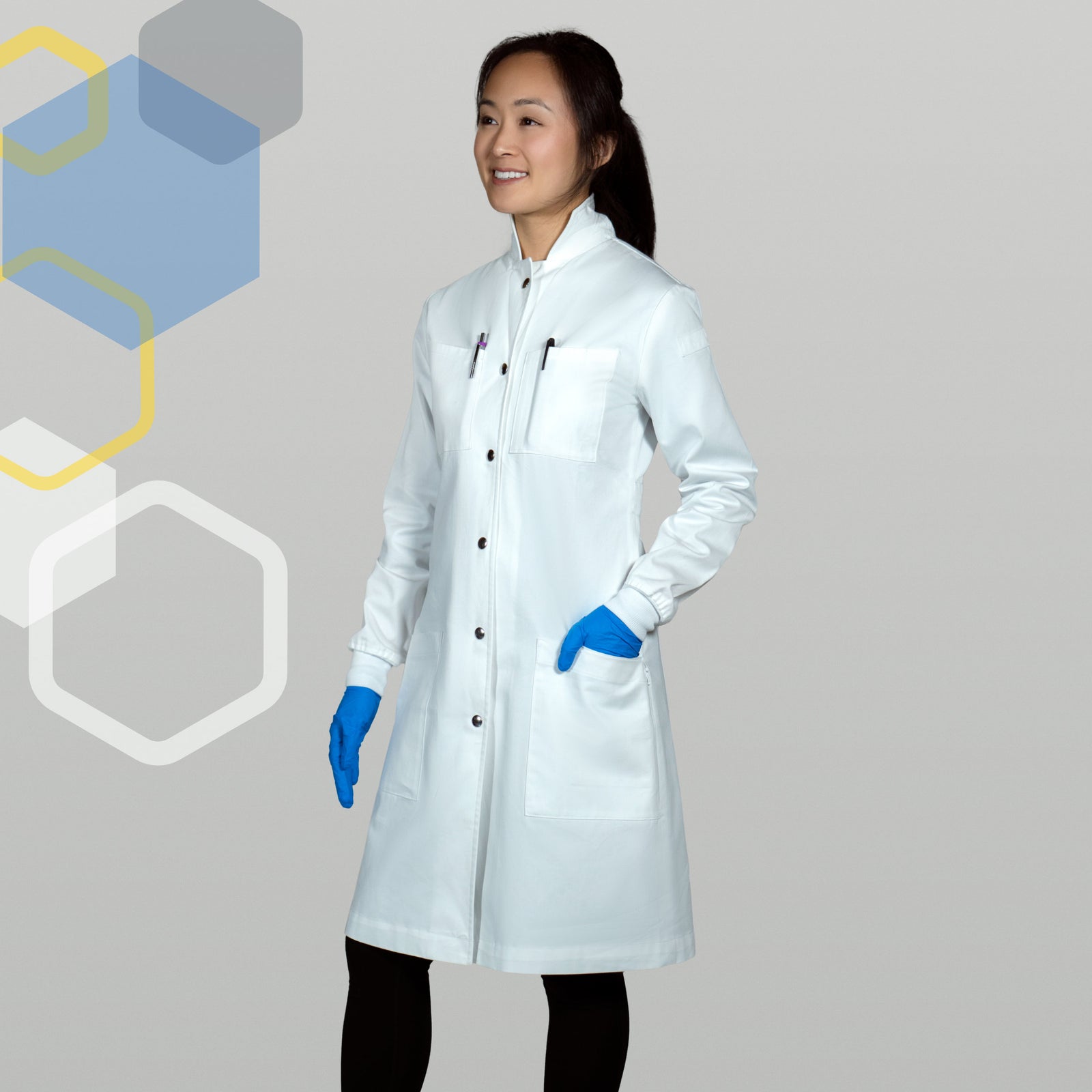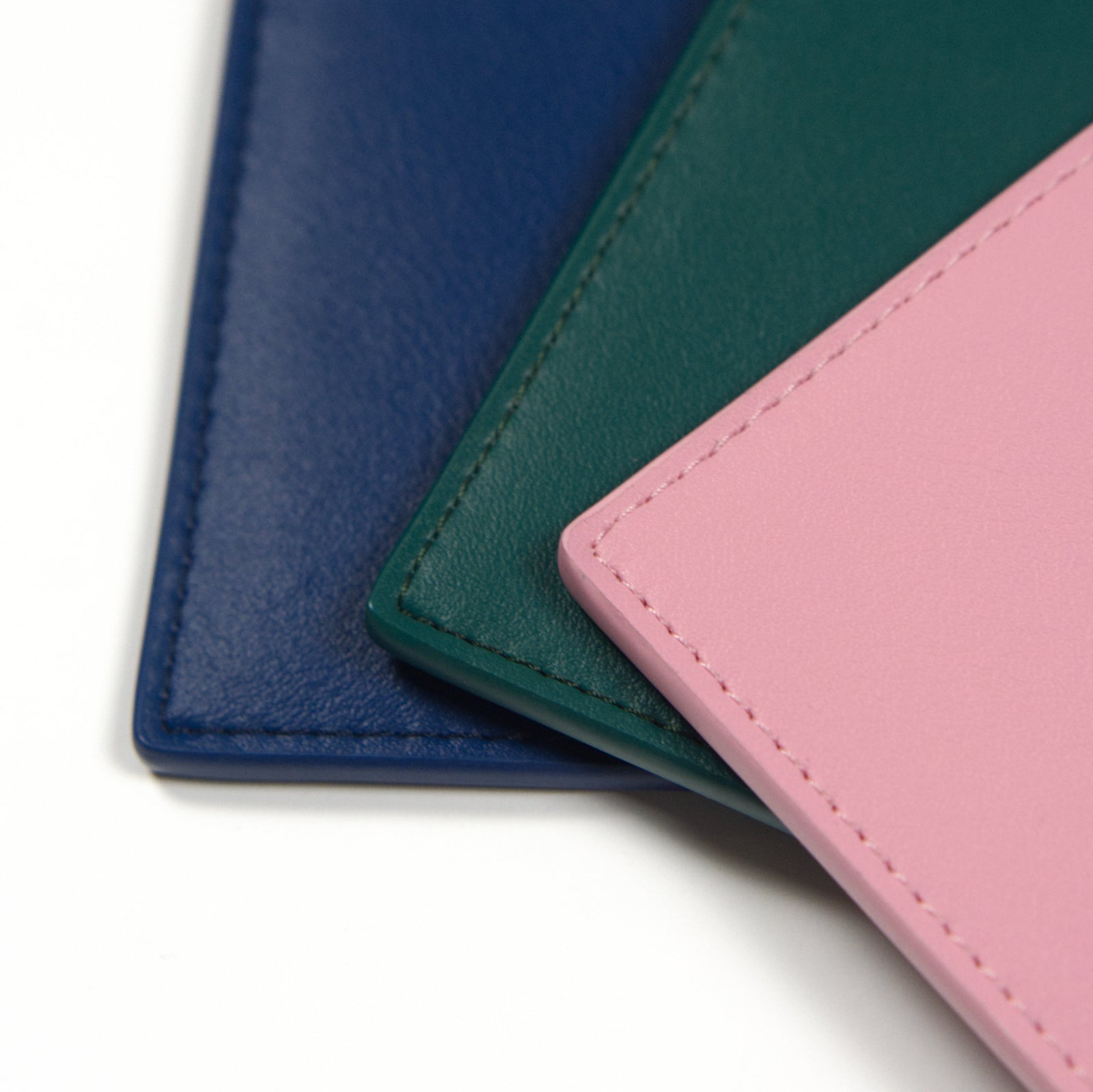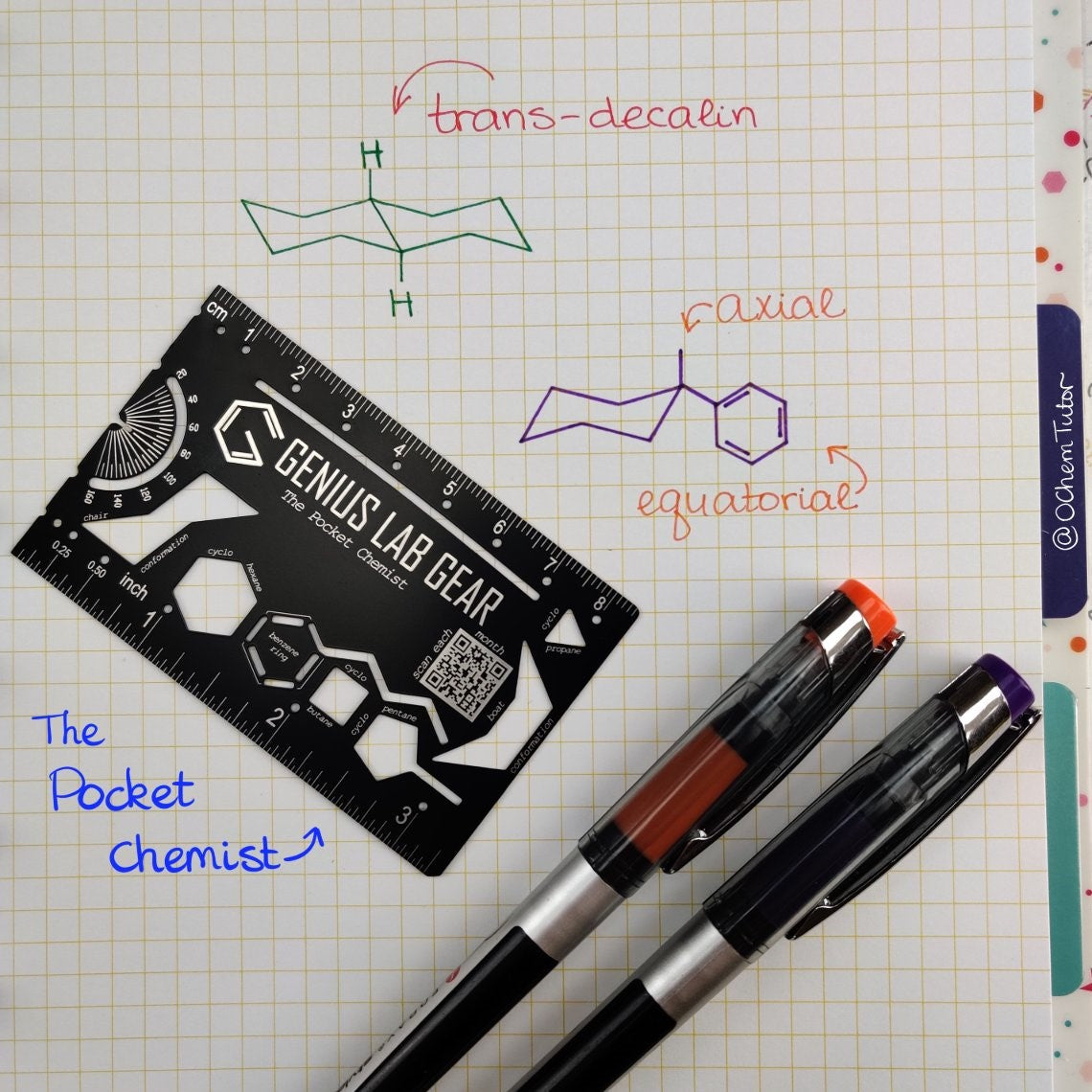Your Cart is Empty
Menu

Lab Coats with Knit Cuffs vs. Open Cuffs (What’s best for scientists?)
by Arlene Mendoza 4 min read
We surveyed over 1500 scientists on what makes the best lab coat. Their comments reveal that small upgrades to your lab coat can be LIFE CHANGING (or feel like it). There’s a fierce debate between the knit cuffed sleeve and the straight open cuff camps, but our survey data reveals one clear favorite.

Here are a few key considerations when choosing your lab coat cuff type:
Which lab coat cuff has better protection against chemicals?
Knit cuffed sleeves help your lab coat gently hug your wrist. This keeps it from sliding backwards and exposing your skin when you reach forward like straight cuffs often do. This means that ribbed knit cuffs usually cover your skin more completely, and in more situations.
But, beware that these ribbed knit cuffs are usually a stretchy cotton material and absorb fluids quickly. If you do drip onto your lab coat cuffs, take it off immediately and wash it! These can trap fluids against your skin if you're not paying attention. You can wear long nitrile gloves over top of the elastic knit cuffs, or underneath them, for a double layer of protection.
I’d take a soft absorbing material over a design exposing my skin directly any day! This is the #1 reason we designed our own 100% cotton lab coat for scientists with knit cuffs, snap buttons, and a convertible collar!
Winner: Knit cuffs

Which cuff type makes research easier and less accident-prone?
Everyone learns this the hard way. You don’t think about it until it happens! Those straight open cuffs usually hang below your wrist by a couple of inches. When waving your hands around a fume hood or chemistry bench with glassware full of chemicals, the traditional open cuffs are about 100 times more likely to catch on equipment or knock something over!
Here’s one example of a Redditor getting baggy lab coat sleeves caught in machinery, but luckily didn’t lose a finger:

If your straight cuff sleeves are too long, they stick straight out and make it hard to do precision tasks. If they are too short, they expose the skin on your wrist. Can’t win! Knit cuffs stay on your wrist, even if the sleeves are a few inches too long. They make your lab coat more flexible and more likely to fit well.
I once tipped over a graduated cylinder, which didn’t shatter but spilled hydrochloric acid all over the fume hood floor. My whole lunch break was spent cleaning up!
Winner: Knit cuffs
Which sleeve cuff reduces contamination of your experiment?
Chemical and biological exposure goes both ways! Humans constantly shed skin cells and small hairs. With straight open cuffs on your lab coat, this skin and hair can easily fall into your reaction or cell culture. If you’re struggling with contamination issues in your microbiology lab, try using knit cuffs to see if that fixes it.

Plus, consider that baggy cuffs on your lab coat might just get dunked straight into your experiment like this comment on Reddit below.

Winner: Knit Cuffs
Which lab coat cuff type is the most comfortable to wear?
This one isn’t straightforward. I personally love how the knit cuffs hug my wrist and move back and forth with my own movements. It’s comforting, really. THE WORST thing in my book is a straight cuff lab coat whose sleeves are too short. Ever worn a suit jacket or dress shirt that does this? I can’t stand it!
In warmer labs, some scientists prefer the air flow you get with the straight cuffs. Air flow is great if you aren’t concerned with chemical exposure or contamination, and if the sleeves are long enough to fit you well.

Straight cuffs are also a little better if you happen to wear bulky clothes underneath that have large cuffs or thick sleeves at the wrist. But, you can usually roll these up a bit or plan ahead to wear clothes to lab that work well with your lab coat.
Winner: Tie
Which lab coat cuff type is easier to take off quickly?
The knit cuffs hug your wrist well, so when you’re running around on fire, you might not appreciate that these take about 3 extra seconds to fully throw on the ground. That being said, you can get the coat off your body just as fast, so the extra danger here is minimal. Plus, if you’re working with flames anyway, the loose and baggy cuffs are more likely to hang into a Bunsen burner.
Giving a W here to the baggy cuffs, but there are caveats that should be considered!
Winner: Loose Cuffs
So, which lab coat cuff sleeve type do scientists prefer?
Our survey of over 1500 scientists is broken down by types of research: wet chemistry, life sciences, and clinical. (We have other fields but not enough data!). Velcro or snap cuffs also got some votes, along with tight elastic cuffs, but these are less popular and harder to find.
- In wet chemistry research, knit cuff sleeves were preferred 4:1 over straight open cuffs on their lab coats.
- In life sciences, the stretchy cuffed sleeves were preferred 3:2 over straight cuffs. (We think this is because they like to roll them up, but that doesn’t protect your skin!)
- In clinical research, knit cuffed lab coat sleeves were still preferred 3:1 over regular cuffs. This surprised us (in a good way)!

Overall Winner: Knit Cuffs
Where to buy lab coats with knit cuffs?
Hopefully the data above convinced you that knit cuffs are usually the best option. That's why we took the feedback from these 1500 scientists and solved 90% of their problems with one updated lab coat design. 100% cotton, knit cuffs, snap buttons, a convertible collar (traditional or Howie), zippered side vents, pen slots, and pockets galore!

After 2 years of development and testing, these are now in stock and ready to ship. Visit The Lab Coat Project page here to see more details.
Lab Coat Guides
Stay up to date
Drop your email to receive new product launches, subscriber-only discounts and helpful new STEM resources.
Disclosure
As an Amazon Associate I earn from qualifying purchases.
Lab Coats designed by scientists
Our lab coats were designed from the feedback of over 1000 scientists as a part of The Lab Coat Project. It's a crowdsourced design specifically for scientific research with high-end features at an affordable price.
The "Louis" Men's Cotton Lab Coat
best-sellers-gifts-gear-and-art-for-scientists-and-engineerslab-coats
The "Louis" Men's Cotton Lab Coat from
$49.95
The "Louis" Men's Cotton Lab Coat from
$49.95
The "Curie" Women's Cotton Lab Coat
best-sellers-gifts-gear-and-art-for-scientists-and-engineerslab-coats
The "Curie" Women's Cotton Lab Coat from
$49.95
The "Curie" Women's Cotton Lab Coat from
$49.95
Pocket Protector for Lab Coats
gifts-for-professors-and-grad-school-pisgifts-for-scientists-and-engineersbest-sellers-gifts-gear-and-art-for-scientists-and-engineersunique-gifts-for-chemists-and-chemistry-studentsunique-gifts-for-engineersunique-gifts-for-graduate-and-phd-studentslab-coatslab-gearstem-pocket-tools
Pocket Protector for Lab Coats from
$13.45
$40.35
Pocket Protector for Lab Coats from
$13.45
$40.35
Collection list
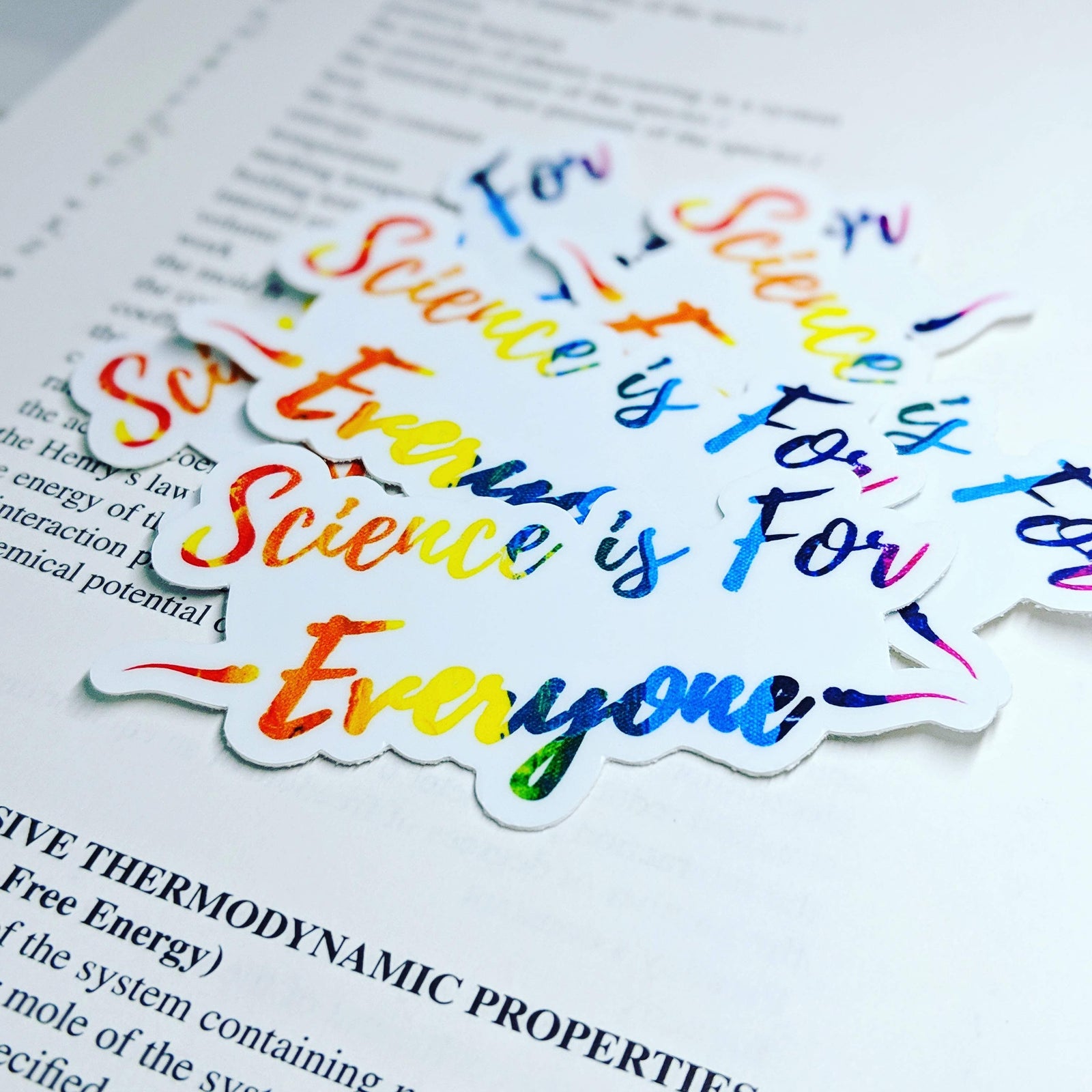
Science-themed Stickers
Science-themed Stickers
Science-themed Stickers
View All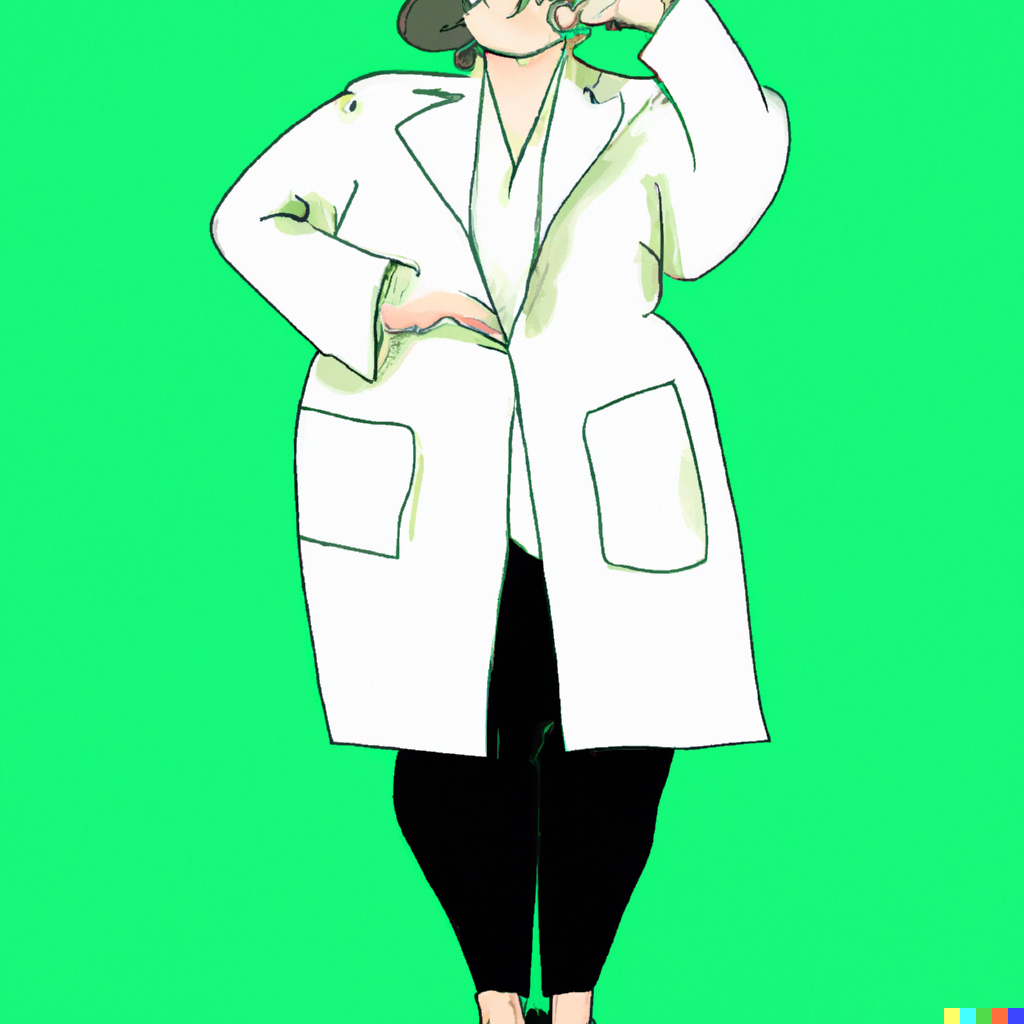
Plus-sized and Petite Lab Coats: Fit and Buying Guide
6 min read
Finding a lab coat that fits well can be a real challenge for many women, especially those that would consider themselves curvy, plus-sized, and petite. We surveyed over 800 female scientists. This article will share their most common problems with lab coats and how to solve them.

7 Differences between Scientist and Doctor's lab coats
7 min read
Are you wearing a lab coat designed for a doctor? Or for a scientist? How can you tell? We surveyed over 1500 scientists to figure out what they want in their perfect lab coat. In this article, I’ll break down the 7 key things you should look for when deciding what you should buy.

Lab Coats with Knit Cuffs vs. Open Cuffs (What’s best for scientists?)
4 min read
We surveyed over 1500 scientists on what makes the best lab coat. Their comments reveal that small upgrades to your lab coat can be LIFE CHANGING (or feel like it). There’s a fierce debate between the knit cuffed sleeve and the straight open cuff camps, but our survey data reveals one clear favorite.
GET UPDATES ON NEW LAB COAT DESIGNS
Drop your email to be notified when new lab coat designs are released, plus our monthly resource newsletter.


